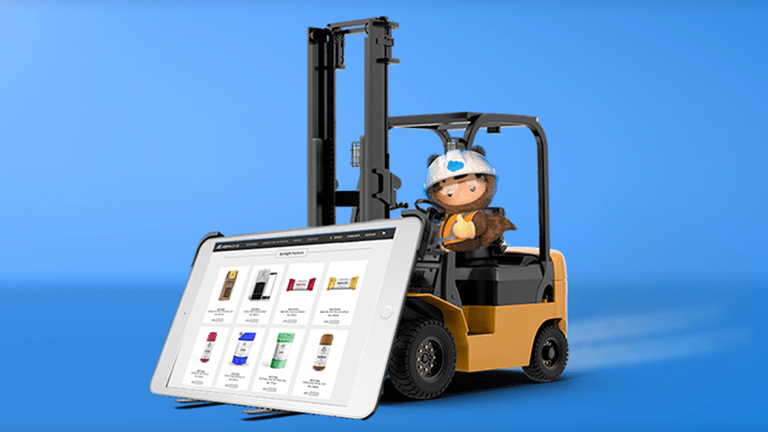The B2B Digital Commerce Playbook
Senior Content Marketing Manager

Chapter 1
How to Build a Long-Term Plan
Focus on your top priorities — and use a phased approach for everything else.

- What do customers really want and how can we improve their experience?
- How can we show early wins using a minimum viable product (MVP) approach and start getting a return on investment (ROI) as quickly as possible? This could be starting with a subset of features, products, or a single business unit or geography.
- How can we deliver with a phased approach that allows us to guide and adjust the implementation based on real-time market information?
Give your customers a seat at the table.
“It took some time for us to define our strategy, but we wanted to understand what was really critical to our customers.”
Livia Miyabara
Marketing & Strategy Leader for GE Parts and Repairs
- Customer interviews and focus groups
- Feedback from sales and customer service teams
- Website metrics (page views, time on page, abandoned cart numbers, or results from A/B testing, and more)
- Data from surveys or polls
- Revenue numbers and other sales data
- The number of customer phone calls or in-person visits — plus their results
Chapter 2
How to Align Your Team and Get Cross-Functional Support
Share the benefits of digital commerce with sales.

- Fewer mundane tasks, such as updating spreadsheets
- Less time spent on repeat orders and more time spent on finding new business
- Access to new insights based on ecommerce data
- The bandwidth to provide more personal experiences to high-value customers
- Revenue numbers and other sales data
- The opportunity to be seen as more of a trusted advisor, instead of an order taker
Since the deployment of its new site, Ovation Medical has seen 65% of sales come through B2B Commerce and its repeat order processing time has been cut in half. As a result, the productivity of sales reps has doubled.
Bring in cross-functional stakeholders as early as possible.
- IT — This team may have concerns around technology integration and impacts to uptime. Make sure to set up a process to gather analytics to measure the success of launch.
- Sales — This group may have concerns about how a digital storefront will impact salaries and day-to-day work. Proactively determine the compensation of sales reps for digital sales. Show the value of the insights they will gain from the digital experience, and how they will benefit. Ensure they get commission so they encourage buyers to adopt.
- Customer Service — Consider integrating service options within the commerce site to deflect cases and help service reps increase efficiency. For example, service teams can add knowledge articles to the site or integrate a customer service chat.
- Legal — Consider privacy and data governance concerns like GDPR in your plan. Make sure terms and conditions on your site are reviewed by a legal representative.
- Marketing/Business Units — Integrate with the new product launch process so that product details like names, descriptions, and images go live on the commerce site. Align with marketing regularly to make sure promotions for the site are ready for launch.
Use your digital commerce strategy as a recruiting tool for high-performers.

See the top trends in B2B Commerce.
Chapter 3
Your Checklist to Launching Fast

Develop an MVP plan.
- Survey existing customers to identify top pain points
- Consider company goals and sales team pain points
- Select your top three priorities
- Work on the roadmap: What features will launch in what release?
- Identify the working team
Get internal buy-in across functions.
- Create a proof of concept (POC) based on the MVP plan
- Use the POC for feedback and buy-in
- Connect the MVP plan with the pain points it will address
Establish a communication cadence with key stakeholders to get and keep their support.
Develop a communication plan with existing buyers to drive adoption.
- Enable sales on using a POC storefront so they can demo the site to buyers
- Consider posting instructions on how to use the new website, like video tutorials
Go live and celebrate.
Track results and report on key metrics.
Grab a coffee and begin planning for the next launch.
Next Steps
More Resources

Blog

Blog

Report




